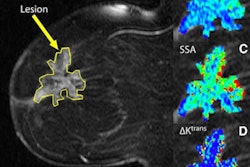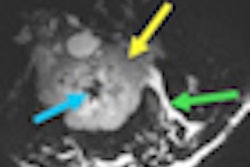Dear Women's Imaging Insider,
Mammographic spot compression views have served as an important tool since the late 1980s for diagnostic breast imaging to identify masses. They reduce noise from scattered radiation, reduce superimposition of overlapping tissue, and also improve the effective spatial resolution of the detector, which enhances tissue contrast.
But they also require women to come back and be imaged again.
With the advent of full-field digital mammography (FFDM) and digital breast tomosynthesis (DBT), clinicians have asked whether DBT could improve mammographic sensitivity in ways similar to spot views -- and thus expose women to fewer recalls and radiation. Researchers at the University of Michigan have conducted a study that compares the two modalities' ability to characterize breast masses as benign or malignant. Click here to discover what they found.
Once you've read our featured story, take a look at what else is going on in the Women's Imaging Digital Community:
- Find out why women can expect at least one false-positive mammogram every decade of screening.
- Learn why California Gov. Jerry Brown vetoed breast density notification legislation.
- Discover what researchers are saying about radiation therapy's impact on breast implant failure.
- Find out why starting breast cancer screening as early as age 25 may help women who carry a particular genetic mutation live longer.
- Learn why the American Society for Radiation Oncology is considering updating its accelerated partial-breast irradiation guidelines.
As always, if you have a comment, report, or article idea to share about any aspect of women's imaging, I invite you to contact me.




















